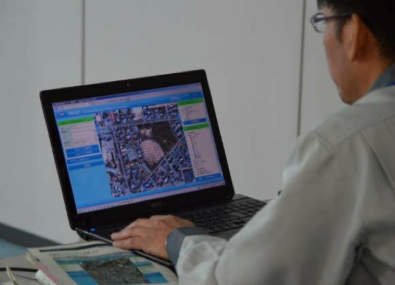The Japan Atomic Energy Agency announced on 10 January that it has developed a new system that can be used to calculate and visualise the reduction in the air dose rate following decontamination. It also plans an experiment to melt a section of a nuclear fuel rod, in a bid to further analyse the Fukushima accident.

The Japan Atomic Energy Agency announced on 10 January that it has developed a new system that can be used to calculate and visualise the reduction in the air dose rate following decontamination. It also plans an experiment to melt a section of a nuclear fuel rod, in a bid to further analyse the Fukushima accident.
The Restoration Support System for Environment (RESET), which requires only an Internet browser and no specialist knowledge, could be useful for setting decontamination goals and considering which areas to decontaminate to have the greatest effect in reducing the dose rate, according to JAEA.
Takuya Yamashita, who developed the system, plans to show it to local governments in Fukushima Prefecture and to recommend it for more effective decontamination.
The tool is designed for decontamination projects in municipalities located in the Special Decontamination Areas – restricted areas within a 20 km radius of the Fukushima Daiichi plant, or deliberate evacuation areas – as well as the Intensive Contamination Survey Areas. All these regions had cumulative annual dose estimates for individuals exceeding 1mSv-20mSv/year.
RESET has a built-in database of measurement data from aircraft monitoring and vehicle surveys conducted in Fukushima Prefecture and other areas. It also contains information on decontamination methods and decontamination factors obtained through demonstration decontamination projects.
After designating the area for decontamination on a map, along with the chosen decontamination method, the RESET system displays information on the dose rate prior to decontamination and the predicted dose rate afterwards. It also comes up with an estimation of decontamination cost.
RESET can forecast the dose rate when decontamination is not carried out, and at various periods up to ten years after decontamination.
The tool takes into account the different topography in locations to be decontaminated. It will also recommend locations for additional measurements, if data is insufficient to evaluate doses in a given region.
Nuclear fuel meltdown experiment aims to improve understanding of Daiichi accident
JAEA is planning to recreate a small-scale version of the meltdown that occurred at unit 1 of the Fukushima Daiichi nuclear power station following the Great East Japan Earthquake and tsunami of March 2011.
The experiment is due to be carried out at the Nuclear Safety Research Reactor in Tokai, Ibaraki Prefecture at some point between April 2014 and March 2015.
According to the Yomiuri Shimbun, researchers will place a stainless steel capsule containing a 30-centimetre fuel rod section within the reactor core. The rod will start to melt once the temperature rises above 2000ºC.
During the experiment JAEA aims to collect temperature and pressure data. It also plans to put a camera inside the capsule to record the rod melting process and will analyse the melted fuel once it has solidified.
JAEA hopes that the experiment will help it to understand the phenomena that occurred during the Fukushima Daiichi accident. That data will also be used to determine responses in the event of another nuclear power plant accident.
Photo: RESET system (Source: JAEA)
